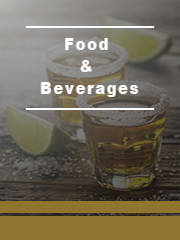The global Glycine-Food Grade market was valued at US$ million in 2022 and is projected to reach US$ million by 2030, at a CAGR of % during the forecast period. The influence of COVID-19 and the Russia-Ukraine War were considered while estimating market sizes.
GLYCINE USP/FOOD GRADE is categorized as an amino acid which is a white and crystalline powder. It is nonessential acid and improves glycogen storage which in turn helps in the synthesis of collagen, hemoglobin and glutathione. It helps ameliorating high blood fat as well as improves uric acid levels.
This report aims to provide a comprehensive presentation of the global market for Glycine-Food Grade, with both quantitative and qualitative analysis, to help readers develop business/growth strategies, assess the market competitive situation, analyze their position in the current marketplace, and make informed business decisions regarding Glycine-Food Grade. This report contains market size and forecasts of Glycine-Food Grade in global, including the following market information:
Global Glycine-Food Grade Market Revenue, 2018-2023, 2024-2030, ($ millions)
Global Glycine-Food Grade Market Sales, 2018-2023, 2024-2030, (K MT)
Global top five Glycine-Food Grade companies in 2022 (%)
The U.S. Market is Estimated at $ Million in 2022, While China is Forecast to Reach $ Million.
Content>0.99 Segment to Reach $ Million by 2030, with a % CAGR in next six years.
The global key manufacturers of Glycine-Food Grade include Ajinomoto, Yuki Gosei Kogyo, Showa Denko KK, GEO Specialty Chemicals, Chattem Chemicals, Paras Intermediates, Shijiazhuang Donghua Jinlong Chemical and Newtrend Group, etc. in 2022, the global top five players have a share approximately % in terms of revenue.
We surveyed the Glycine-Food Grade manufacturers, suppliers, distributors and industry experts on this industry, involving the sales, revenue, demand, price change, product type, recent development and plan, industry trends, drivers, challenges, obstacles, and potential risks.
Total Market by Segment:
Global Glycine-Food Grade Market, by Type, 2018-2023, 2024-2030 ($ Millions) & (K MT)
Global Glycine-Food Grade Market Segment Percentages, by Type, 2022 (%)
- Content>0.99
- Content>0.995
- Content>0.998
Global Glycine-Food Grade Market, by Application, 2018-2023, 2024-2030 ($ Millions) & (K MT)
Global Glycine-Food Grade Market Segment Percentages, by Application, 2022 (%)
Global Glycine-Food Grade Market, By Region and Country, 2018-2023, 2024-2030 ($ Millions) & (K MT)
Global Glycine-Food Grade Market Segment Percentages, By Region and Country, 2022 (%)
- North America (United States, Canada, Mexico)
- Europe (Germany, France, United Kingdom, Italy, Spain, Rest of Europe)
- Asia-Pacific (China, India, Japan, South Korea, Australia, Rest of APAC)
- The Middle East and Africa (Middle East, Africa)
- South and Central America (Brazil, Argentina, Rest of SCA)
Competitor Analysis
The report also provides analysis of leading market participants including:
- Key companies Glycine-Food Grade revenues in global market, 2018-2023 (Estimated), ($ millions)
- Key companies Glycine-Food Grade revenues share in global market, 2022 (%)
- Key companies Glycine-Food Grade sales in global market, 2018-2023 (Estimated), (K MT)
- Key companies Glycine-Food Grade sales share in global market, 2022 (%)
Further, the report presents profiles of competitors in the market, key players include:
- Ajinomoto
- Yuki Gosei Kogyo
- Showa Denko KK
- GEO Specialty Chemicals
- Chattem Chemicals
- Paras Intermediates
- Shijiazhuang Donghua Jinlong Chemical
- Newtrend Group
Outline of Major Chapters:
Chapter 1: Introduces the definition of Glycine-Food Grade, market overview.
Chapter 2: Global Glycine-Food Grade market size in revenue and volume.
Chapter 3: Detailed analysis of Glycine-Food Grade manufacturers competitive landscape, price, sales and revenue market share, latest development plan, merger, and acquisition information, etc.
Chapter 4: Provides the analysis of various market segments by type, covering the market size and development potential of each market segment, to help readers find the blue ocean market in different market segments.
Chapter 5: Provides the analysis of various market segments by application, covering the market size and development potential of each market segment, to help readers find the blue ocean market in different downstream markets.
Chapter 6: Sales of Glycine-Food Grade in regional level and country level. It provides a quantitative analysis of the market size and development potential of each region and its main countries and introduces the market development, future development prospects, market space of each country in the world.
Chapter 7: Provides profiles of key players, introducing the basic situation of the main companies in the market in detail, including product sales, revenue, price, gross margin, product introduction, recent development, etc.
Chapter 8: Global Glycine-Food Grade capacity by region & country.
Chapter 9: Introduces the market dynamics, latest developments of the market, the driving factors and restrictive factors of the market, the challenges and risks faced by manufacturers in the industry, and the analysis of relevant policies in the industry.
Chapter 10: Analysis of industrial chain, including the upstream and downstream of the industry.
Chapter 11: The main points and conclusions of the report.
